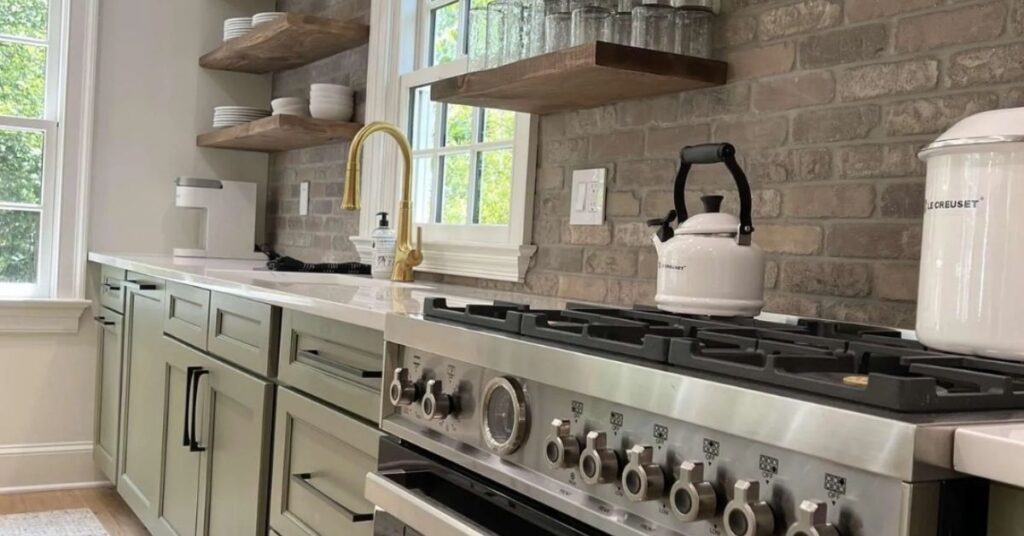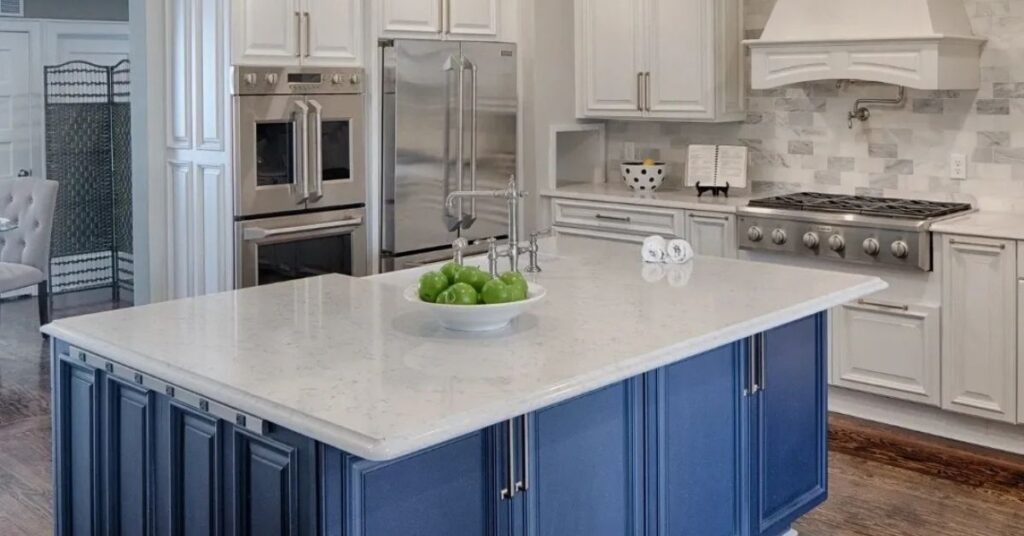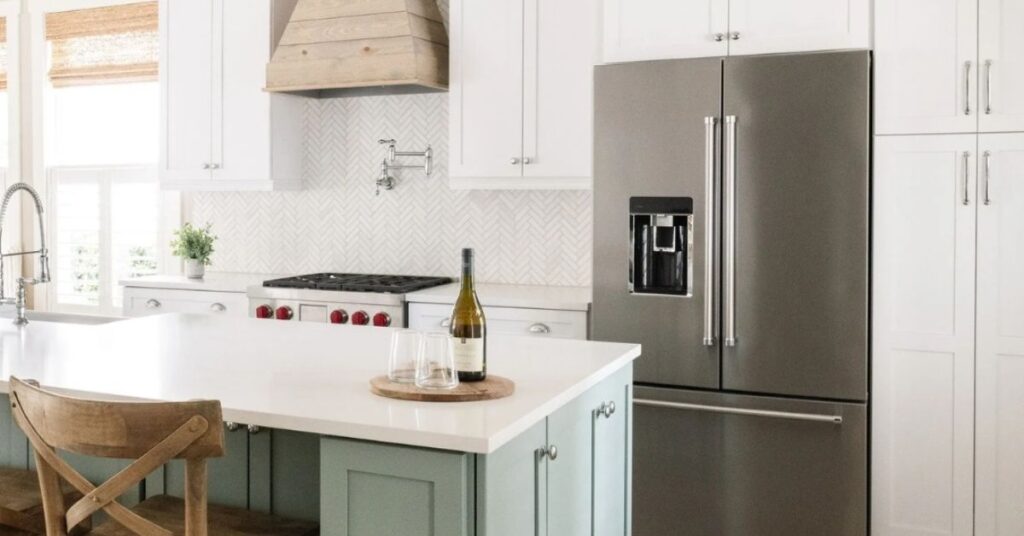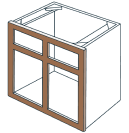How To Color Block Your Kitchen Cabinets

When designing a kitchen that makes a striking visual impact, color blocking your cabinets is an excellent choice. This technique allows you to combine bold shades or neutral tones in creative ways, adding depth, personality, and a modern aesthetic to your space. Whether your style leans toward vibrant and energetic or sleek and minimalist, learning how to color block your kitchen cabinets can transform your space into something that truly reflects your taste.
In this comprehensive guide, we’ll walk you through everything you need to know about color blocking cabinets. By the time you’re done reading, you’ll have a clear understanding of how to create an eye-catching kitchen design while maintaining balance and functionality.
Understanding Color Blocking
Before we delve into the practicalities, let’s go over what color blocking means in the context of kitchen design. Color blocking is a technique where two or more distinct colors are paired together in defined sections, creating contrast and a bold visual layout. Originally popular in the fashion and art worlds, this trend has now been adapted as a stylish element in interior design.
Color blocking your cabinets doesn’t necessarily mean using bright, contrasting colors. It can also include subtle combinations of neutrals, pastels, or even different wood tones. The goal of color blocking in kitchens is to create an organized, cohesive look that makes a statement without overwhelming the space.
Choosing Your Color Palette
The first step in learning how to color block your kitchen cabinets is selecting the right colors. The hues you choose will set the tone for the entire kitchen, so it’s crucial to select shades that work well together and suit your overall decor.
Start with a primary color that anchors the design. This could be white, gray, or beige for a neutral base or a more striking shade like navy blue or forest green for a bolder look. Once you’ve chosen your main color, select one or two contrasting or complementary shades. For instance, if your main color is navy, consider pairing it with a warm wood tone or a muted gold accent.
When choosing colors, consider the surrounding elements in your kitchen, such as countertops, backsplashes, and flooring. For example, if you have hardwood kitchen cabinets or natural stone counters, pick colors that will enhance rather than clash with these features.
Creating Balance Through Color Placement
To achieve a cohesive color-blocked look, plan the placement of your colors carefully. A lack of balance can make your kitchen feel disjointed or chaotic. Divide your cabinets into zones for best results. For example, upper cabinets versus lower cabinets or island cabinets versus wall cabinets. Then assign specific colors to each zone.
For a modern and striking effect, consider assigning a darker, bold color to the lower cabinets and a lighter shade to the upper cabinets. This design style creates visual interest and makes the space feel open and airy. Alternatively, using different colors for your kitchen island and surrounding cabinets can make the island a focal point.
Whichever layout you choose, keep in mind that the colors should feel balanced across the space. Avoid concentrating all the bold tones in one area, as this style can look visually heavy.

Coordinating With Finishes and Hardware
Learning how to color block your kitchen cabinets isn’t just about choosing paint colors; the finishing details also influence the finished results. Cabinet hardware, like knobs and handles, provides the perfect opportunity to tie the colors together.
For example, if one section of your cabinets features a softer tone, opt for hardware with a matte black or brushed nickel finish to add subtle sophistication. On the other hand, brass or gold hardware can warm up bold and darker cabinet colors.
Finishes such as gloss, matte, or satin also impact the overall look of your color-block design. A high-gloss paint finish may add a contemporary feel, while a matte finish can give a chic, understated vibe. Consider how these elements will complement the overall kitchen aesthetic.
Achieving Longevity and Maintenance
One of the advantages of color blocking is its versatility, which can align with modern and traditional design preferences. However, to keep your efforts stylish and timeless, choose high-quality materials and paint finishes.
Invest in durable cabinetry finishes that are resistant to water, stains, and wear, particularly for high-traffic areas. Semigloss and satin paint finishes are popular choices for kitchen cabinets because they’re easy to clean and enhance the overall design. Also, keep a touch-up kit with the specific paints you use on your cabinets to repair minor scuffs or chips over time.
Incorporating Subtle Textures and Patterns
While most color-blocking designs focus on bold, solid colors, you can also incorporate subtle textures or patterns to add depth to your kitchen. Textured finishes, like linen or woodgrain effects, provide visual interest without overpowering the space. Similarly, cabinet panels with slight beveling or geometric patterns enhance a two-tone or three-tone color-blocked look.
For instance, pairing smooth, high-gloss cabinets in white with textured pastel cabinets can create a striking yet cohesive contrast. If you’re drawn to natural warmth, consider integrating wooden cabinet panels with painted ones for a refined finish.

Seeking Professional Services
Color blocking your kitchen cabinets can seem overwhelming, particularly if you’re unfamiliar with color theory or have a complex layout. If you’re unsure where to start, consider consulting kitchen design professionals who specialize in cabinetry. They can help you visualize the final look and take care of the technical aspects, such as matching finishes and trims.
Some companies even offer virtual design consultations, allowing you to collaborate with a designer to select cabinet colors and layouts that suit your kitchen. Utilizing professional expertise can make the process smoother while delivering stunning results.
Reflecting Your Personal Style
Ultimately, the key to harnessing the art of color blocking your kitchen cabinets lies in creating a design that reflects your style. Whether you prefer vibrant colors or earthy neutrals, you can discover a color-blocked look that works beautifully in your kitchen.
Experimenting with bold and innovative color choices is an opportunity to showcase your creativity and create a timeless aesthetic. Don’t be afraid to take the extra time to plan a design that feels authentically yours.
Transform Your Space With Color Blocking
Whether updating your current cabinetry or designing a kitchen from scratch, thoughtful color blocking can make your space a standout feature. Focus on balance, high-quality finishes, and personal style to create a kitchen that’s as functional as it is beautiful.







